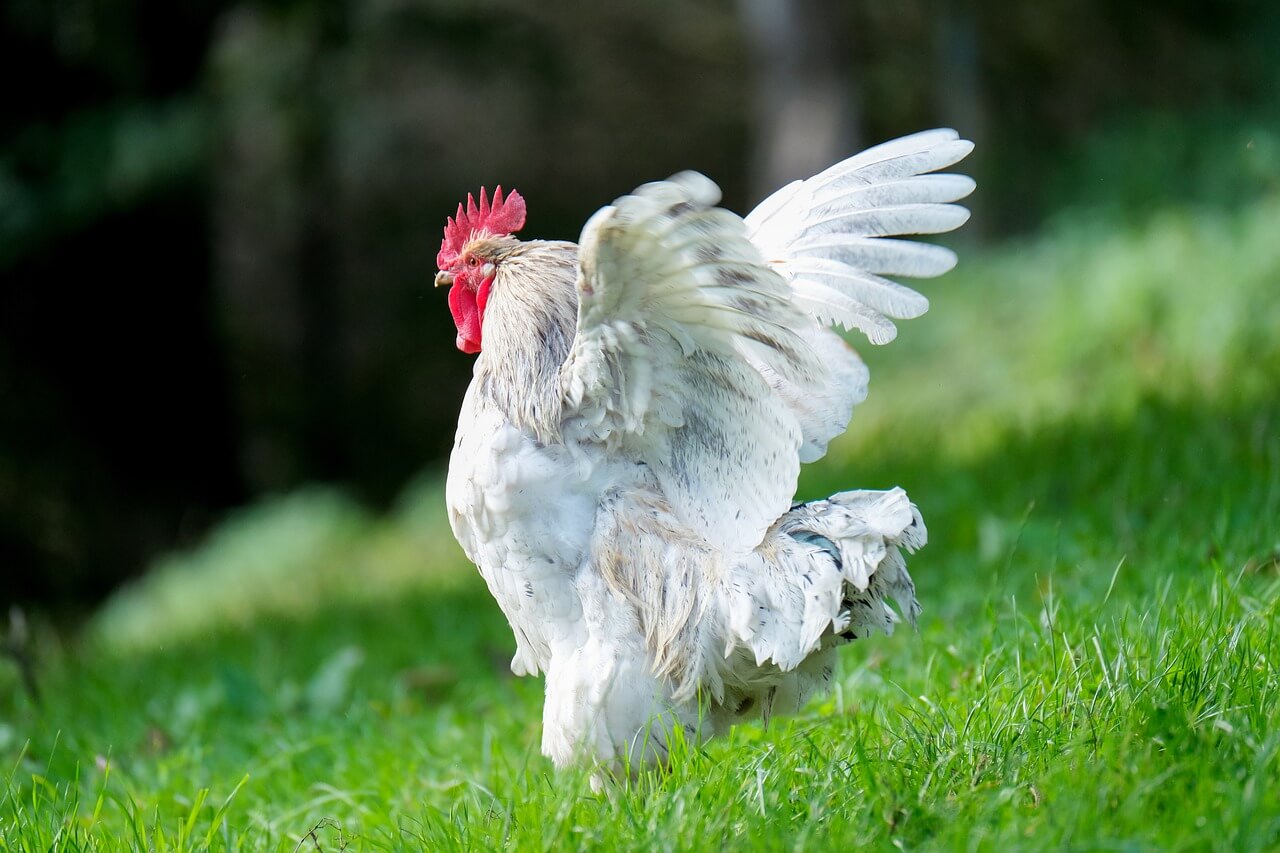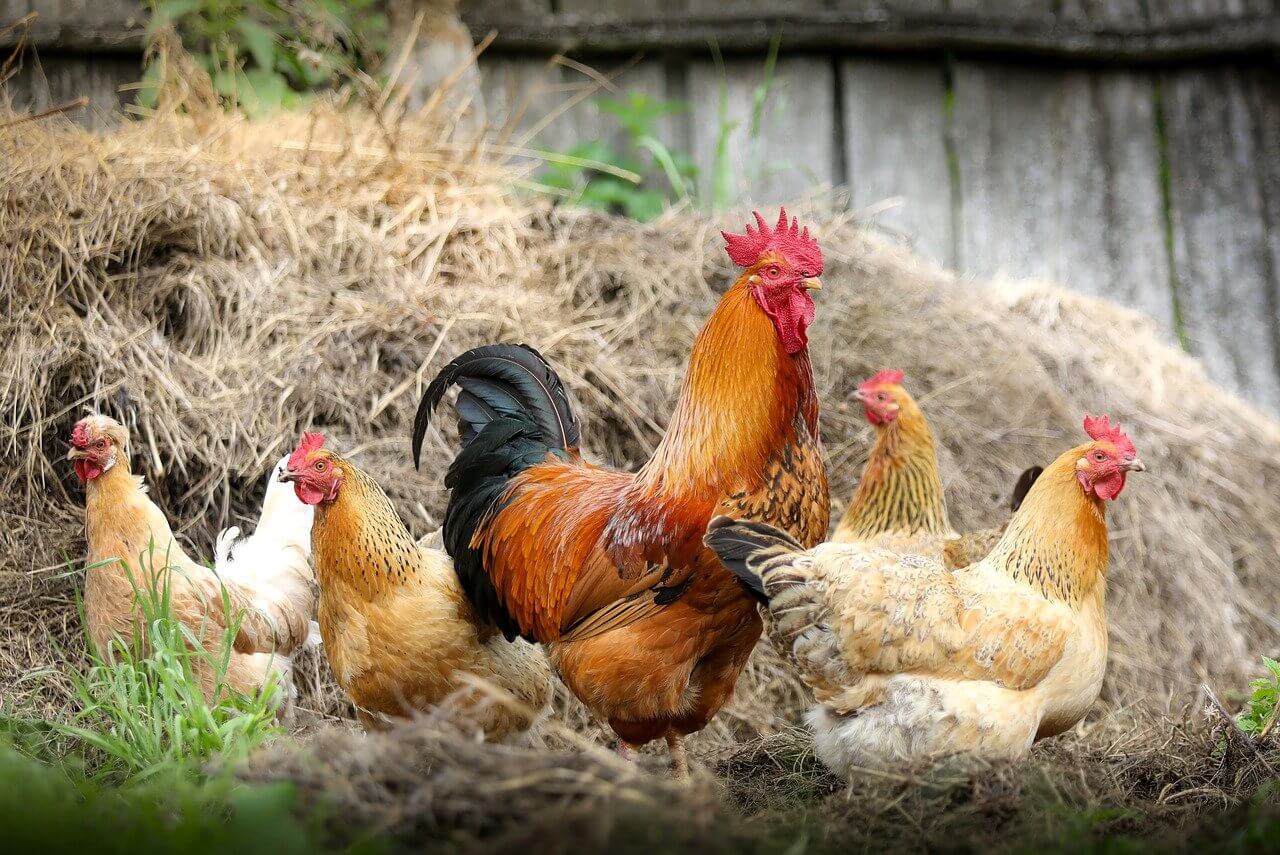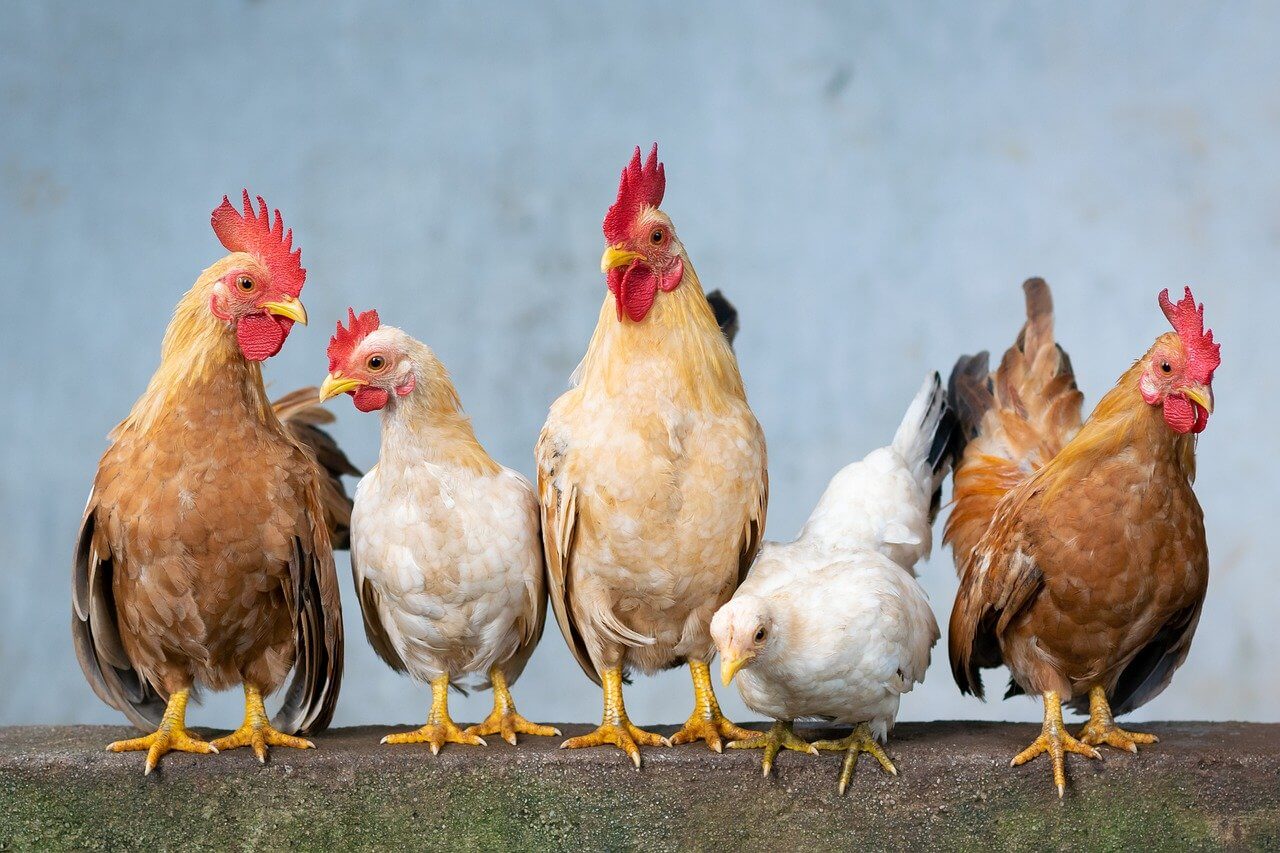Having too many roosters in your flock can be a big problem. Not only do they fight each other, but they make your chickens’ lives a misery too. The best solution is to turn them into something of value that can feed the family. But first, you’ll need to know how to butcher a rooster, so let’s see how it’s done.
What You'll Learn Today
Are Roosters Good For Butchering?

The meat from roosters is eaten by millions of people around the world. In fact, in some cultures, certain breeds of rooster, such as the Ayam Cemani, are believed to have magical powers.
The blood, meat, fat, and bones from the all-black, Ayam Cemani rooster from Java in Indonesia, are used for a number of purposes, including:
- Ritual sacrifices to bring good luck
- Treating sprains
- Increasing stamina
- Preventing arthritis
- Maintaining a healthy cholesterol balance
- To help children grow
- Stress relief
- Increasing the metabolism
Other than the mythical qualities of the Ayam Cemani, all kinds of roosters are eaten worldwide. One reason for this is because you only need one rooster for every ten or so chickens.
Unfortunately, when eggs hatch, the ratio of males to females is most often pretty equal. Hence, an excess number of male birds exist with no purpose other than food for the table.
If you’re wondering why you don’t see roosters for sale in most stores, it’s because they aren’t raised as meat birds, known as broilers, in the US. Male chicks are killed at birth.
If you have your own breeding flock of chickens, you’ll be familiar with the problem of having too many boys around.
Traditional heritage chicken breeds kept to lay eggs and provide meat for the table include America’s oldest chicken, the Dominique, and others such as the Rhode Island Red or Barred Plymouth Rock. They mature slowly and aren’t considered fully grown until they are around 21 to 24 weeks of age.
Broiler breeds are industrial chickens. They are bred to mature fast and carry more meat than traditional chickens. They can go from hatching to butchering in around six weeks.
Although the idea of birds maturing that fast may seem great, there are a number of problems and welfare issues.
The meat from a broiler is not as tasty as that of a traditional bird, although it is often quite tender, plump, and succulent.
Does Rooster Meat Taste Different?
The meat from roosters is quite different from that of broiler chickens. Young cockerels can be roasted but are better stewed. They have a darker meat color and a more robust flavor than broilers. The meat quantity on the bird will also be less.
Roosters are great for certain dishes, such as the traditional French Coq au Vin, where the meat is marinated in red wine, oil, and herbs for 12 hours. This is then cooked in a red wine stock for an hour and a half while other ingredients are added.
Older roosters are suitable for stewing slowly on low heat, and the older the rooster, the richer the flavor will be.
What Age Do You Butcher Roosters?
If you have a glut of roosters and need to reduce your numbers, then you can harvest the young cockerels as soon as they seem large enough, or when they start to terrorize your hens and fight each other. Generally, this is around five months of age.
Many people say they prefer the richer taste of a rooster to that of a hen or broiler. The meat has a good flavor that goes well with full-bodied red wine, port, or brandy. It also works well with tart fruits such as plums, pomegranates, and redcurrants.
Roosters aren’t really suitable for more American-style chicken dishes that require pan-frying or dry roasting, and a young hen or shop-bought broiler is a better choice for this.
How Do You Humanely Kill A Rooster?

If you raise chickens not only for their delicious eggs but also for meat, then at some point, you have to face the fact that someone is going to have to do the unenviable deed of ending their lives.
It’s all about ensuring that they lived well, were adequately cared for, and were given the quickest, most humane end possible.
When looking at a humane way to kill an animal, it doesn’t just mean the methods by which you do the least amount of hands-on dirty work. However you choose to do it, you are taking a life, and feeling some guilt about that is a normal and healthy response.
Let’s take a look at a few of the different methods that are often used:
Chopping Block
As brutal and gory as chopping off your chicken’s head may seem, done correctly, it is a fast and relatively humane death.
The thing to remember when killing an animal for meat is that you want it to be as relaxed and stress-free as possible. To achieve this, you’ll need to handle your birds regularly, so they are used to being picked up and moved around without getting scared.
Doing this not only helps you when it comes time to kill them but also aids you in keeping an eye on their general health. It can be hard to see if a chicken is undernourished through its dense feathers, but if you pick it up, you’ll feel a protruding breast bone. You can also inspect its feet, legs, and vent to ensure that all is well.
To dispatch a chicken using a block, you need to insert two large nails into the block at approximately one and a ¼ to one and a ½ inches apart. Ensure they are in deep enough so they won’t pull out easily, but also so that there is still sufficient nail sticking up to easily slide the bird’s neck between.
The block should be at a good height so that you aren’t having to bend over too much. You also want to locate it away from the other birds in a place where you can set up a processing area which we will look at in more detail later.
For a clean kill, you need to have a really sharp blade and can use either a hatchet or a meat cleaver.
- Calmly and gently place the bird’s neck between the two nails, making sure you have the bird under your arm and are holding the wings securely against its sides.
- The neck must be stretched out slightly.
- With one swift, clean stroke, bring the cutting blade down rapidly and firmly onto the chicken’s neck, ensuring it immediately severs the head completely off.
If you are on your own, it can be more challenging to kill a bird cleanly. In this instance, it is better to tie the rooster’s legs together gently but securely with some string and then hang them up, so their feet are at about shoulder height.
Next, take hold of their neck in one hand and, using a very sharp, long-bladed kitchen knife, sever the neck from front to back in one clean, quick stroke, always drawing the knife away from you.
Brain Stem
Many professionals will tell you that the best method for a humane kill is to push a sharp boning knife rapidly up and back into the brain through the v slit that is on the roof of the bird’s mouth. You then immediately sever the jugular.
This takes a great deal more precision but can still be done using a block and nails or a kill cone to hold the bird’s head still. People say that once mastered, this technique not only kills the bird instantly but allows you to quickly drain off the blood. It is also stated that the feathers are easier to pluck, as the skin won’t tighten around them.
Neck Breaking
I have seen this done on ducks, and it does require a reasonable amount of strength as well as good technique. It is common practice to kill various small animals and birds.
To do it correctly, a good technique is required, and before attempting it yourself, it would be wise to watch someone else demonstrate the correct method first.
In principle, you are trying to break the bird’s spinal column. This can be done by holding it under the armpit of your weakest arm and using your stronger hand to pull the head sharply down while simultaneously twisting to achieve a clean break.
Some people use a broomstick on the floor and place it across the bird’s neck to pin it to the ground while standing on the broom and pulling the body of the bird upward. Having witnessed this, I feel it is actually quite inhumane, so I would not recommend the technique.
There are pros and cons to using the neck-breaking method. On the plus side, there is no blood unless you pull too hard and sever the head. But it does require you to be wholly committed and put enough force into the movement to ensure the bird dies instantly.
Gas
Another method some people find less brutal than the techniques mentioned above is gassing the bird. It is not something I have ever seen firsthand, and there seems to be some debate over which is the best type of gas to use either CO2 or Nitrogen.
Detailed instructions for making CO2 and the correct procedure for using it can be found online. It is often stipulated that the animal should not be more than 2 lbs in weight and that small quantities of CO2 should be used first to anesthetize the bird before a lethal dose is administered.
How Do You Humanely Butcher A Chicken?

You can dispatch a chicken in exactly the same way as a rooster by using one of the methods we have detailed above.
No matter if it is roosters or chickens you’re preparing for food when harvest day comes, it’s best to make sure you have everything ready so you can exercise a quick, clean, and efficient job.
This helps keep everything running smoothly and is stress-free not only for killing the bird but also for preparing it for storage once dead. This may involve cutting up into parts too, if you don’t want whole chickens.
Let’s take a closer look at the process:
- It’s always best to harvest birds in the morning before it gets too hot. To ensure you can get going as early as possible, make all your preparations the evening before. It is also best to withhold food from the birds for 24 hours to minimize the amount present in the digestive tract.
When you put your chickens to bed for the night, separate out the roosters and place them into a smaller enclosure so they are easy to catch in the morning, and you won’t have to chase them around and make them stressed.
- Prepare your tools and work area.
- You will need your chopping block if you’re using one, the hatchet, cleaver, and other knives. Ensure they are clean and all really sharp. Please keep these safe! You can roll them up in a towel and secure them with some string, then place the roll into a bag.
- If you’re going to use a hot water dip method to make plucking your birds easier, then make sure all the equipment for this is on-site and set up, ready to go.
- You’ll need a table with a chopping board to gut and cut up your roosters into pieces and some string to hang them up with. Not forgetting something to hang them on. A portable clothes rail is ideal for the job.
- A large bucket to place the roosters in once initially dispatched and preferably a large, strong, paper feed sack to put all the feathers and unwanted innards into.
- Freezer bags and a marker pen for making the birds ready for cold storage.
- In the morning, fill your hot water pot and set it on to boil. It can take quite some time, so always do this first. Don’t start killing birds until the water has boiled.
- Lay everything out ready on the table, ensuring you clean it thoroughly first.
- Take your first rooster and dispatch him using your preferred method. Once dead, you can place him into an empty bucket or hang him up for a minute or two until he stops moving.
- Once still, string his legs together if they aren’t already strung and dip him into the boiling water for about 20 to 30 seconds. As soon as you take him out of the water, start plucking the feathers.
Wearing rubber dishwashing gloves can help you with this. It prevents the hot water from scalding your hands and grips the feathers. You may need tweezers to get the smaller pin feathers out of the carcass.
- Once cleanly plucked, take the naked bird to the tap and wash him off, then place him on a chopping board on the table. Using a sharp knife, slice him carefully just below the end of his breast ensuring you don’t cut through the intestines. Be very sure not to cut into the intestines at all, as that will contaminate the bird.
- Enlarge the hole using your hands by ripping gently down each side towards the tail of the bird.
- At the neck end of the rooster using your fingers, separate the windpipe from the membrane and pull to locate the crop. Use your fingers to release the crop from the membranes surrounding it.
- Back at the tail end, put your hand inside the bird, keeping it up high against the breast, and reach as far back towards the neck as possible, separating the membranes as you go.
- Hook your hand around the top of all the innards and gently pull down. Remove all of the innards and keep what you want to use, such as the heart, liver, and gizzard. Dispose of the rest. Wash the bird thoroughly and ensure everything has been taken out of the carcass cleanly.
In this video, you will see how to remove all of the organs from the bird correctly:
You can now butcher your bird into pieces. First, cut off the feet, then the breast, thighs, and drumsticks, and place them into freezer bags in usable quantities, or simply place the entire bird into a freezer bag if you wish to keep it whole.
- Use the marker to write on the bag the date and a description of its contents. When you seal the bag, ensure you remove as much air as possible and that the seal is airtight.
Conclusion
It can be tough to kill your roosters, but ultimately having too many boys around just causes endless amounts of problems. They fight, often to the death, and can inflict terrible injuries on each other. They will also make your hens’ lives a misery by continually mating with them.
When the time to dispatch them comes, don’t delay. Get the job over with quickly, cleanly, and in as humane way as possible. Once done, you can process all of your roosters in one go and have a freezer full of fresh meat to enjoy.
Despite this being a difficult topic for some, we hope this article was helpful and informative. There are many others available for you to read on our website – here is our guide to start a chicken farm.